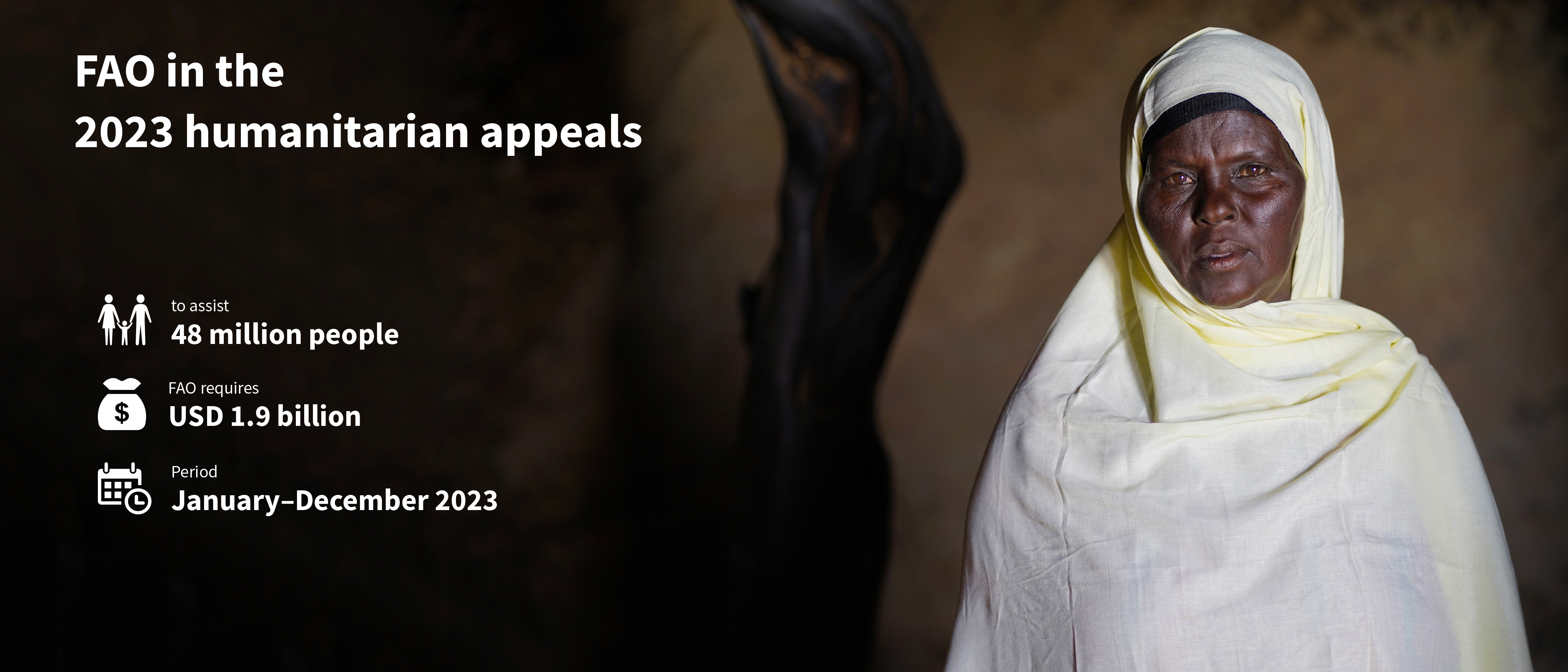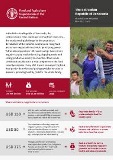
Across the world, 222 million people are experiencing high acute food insecurity, almost one in five of whom are struggling to access enough food to survive the day. They are overwhelmingly farmers, fishers, herders and foresters, whose most basic means of survival have been devastated by conflict or extreme weather (drought, floods), pests, disease or the steady disruption of economic turbulence and instability.
Agriculture aid is life-saving humanitarian aid. Urgent, time-sensitive agricultural interventions, especially when combined with cash and food assistance, have enormous impacts on food availability, nutrition and displacement, among others, significantly cutting other humanitarian costs. More importantly, such interventions are geared towards meeting the needs and priorities of affected communities – allowing them to remain in their homes where it is safe to do so, meet their own needs and lead their own future recovery.
Under the 2023 humanitarian appeals, FAO requires USD 1.9 billion to help almost 50 million people gain access to a steady supply of nutritious food, facilitate their recovery and lay the foundations for resilience to future shocks.
In depth

The Bolivarian Republic of Venezuela: Humanitarian Response Plan 2022-2023
07/2023
In the Bolivarian Republic of Venezuela, the socioeconomic crisis continues to drive food insecurity – the most pressing challenge for the population.

The Sudan: Humanitarian Response Plan 2023
04/2023
Food insecurity remains significantly high in the Sudan, driven by increased and prolonged instability and displacement, economic deterioration and high food prices.

The Sudan: Revised Humanitarian Response Plan 2023
06/2023
The ongoing conflict in the Sudan, which erupted on 15 April, has worsened an already fragile food security situation.

Yemen: Humanitarian Response Plan 2023
03/2023
After eight years of armed conflict, Yemen remains one of the world’s most complex humanitarian crises. More than half of the country’s population, around 17 million people, are acutely food insecure.

